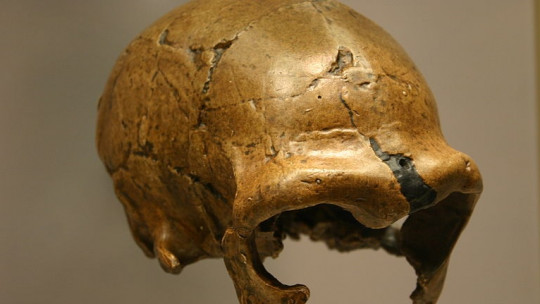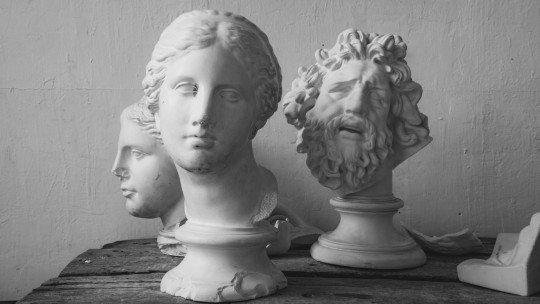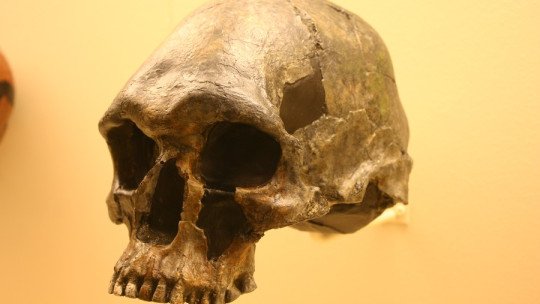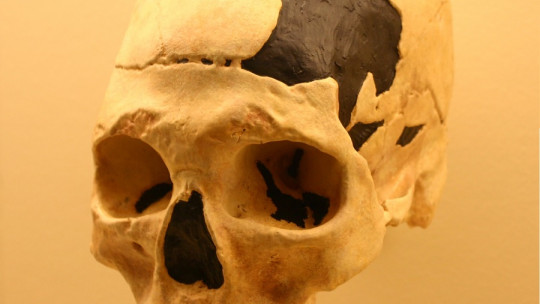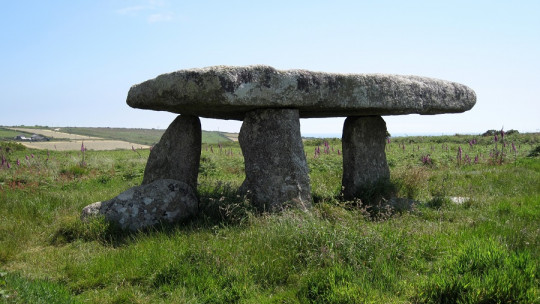
In recent years there has been much talk about the so-called Neanderthal man (the Homo Neanderthalensis scientist). We know a lot of information about this human species that preceded us in the colonization of Europe. However, there are still many dark points to clarify. Where did they come from? What was its origin? Why did they become extinct? Is it true that they mixed with modern humans? And, above all, one of the questions that has raised the most buzz lately: did Neanderthals create art?
In this article we will carry out a brief analysis of the current state of research, and we will try to draw a series of conclusions about whether Neanderthal man was, indeed, capable of artistic expression Let’s see it below.
The theory of art of the Neanderthals
In February 2018, an article published in the journal Science suggested the possibility that Neanderthals had created art at least 20,000 years before the arrival of Homo Sapiens in Europe. The article caused quite a bit of controversy at the time, since until then it had not been proven that this now extinct human species had created art in the same way as modern humans.
The article was based on the discovery of a pigmentation, which seemed artificial, on the surface of three caves located in Spain: La Pasiega (Cantabria), Maltavieso (Extremadura) and Los Ardales (Andalusia). The first tests had dated the pigments to at least 64,000 years ago, which meant that they had been made long before the arrival of the Homo Sapiens to Europe; that is, when European caves were inhabited by Neanderthals.
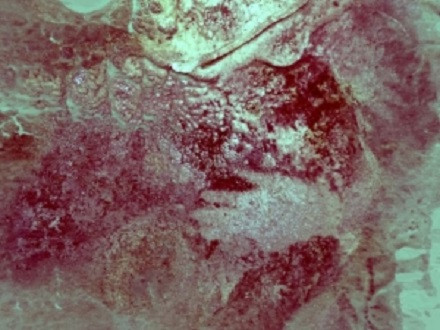
Some voices were raised against this theory, maintaining that these pigments could simply be natural oxidation from the cave and that, in that case, they would have nothing to do with the human hand. But lately the Neanderthal theory has been corroborated, since, according to the latest discoveries, the pigmentation in question has nothing to do with the geological nature of the cave. In other words: the walls were intentionally covered in pigments.
If the latter is true, we would be facing the first known manifestation of art in history and, evidently and in the light of carbon dating, the authors would, indeed, be our relatives the Neanderthals.
Who were the Neanderthals?
In 1856, skeletal remains were found in the Neander Valley near Düsseldorf. The remains were obviously human, but they had some peculiarities: the legs were very bowed and, on the forehead, the skull had a very strange morphology, since the supraciliary arches were excessively developed. Franz Mayer announced a curious theory to say the least. According to this German anatomist, the remains corresponded to a Russian Cossack who was persecuting Napoleon and who suffered from rickets. This disease would explain, according to the scientist, the shape of the legs. Likewise, he stated that the pain caused by rickets had caused him to arch his eyebrows excessively, which had caused the strange morphology of his forehead.
Such a theory may seem anything but scientific to us, but we have to think that, in the mid-19th century, the public was not yet prepared to believe that, in the very remote past, other human species had existed on earth. But the truth is that that’s how it was. Neanderthals lived in Europe and Western Asia about 230,000 years ago (during the Middle Paleolithic), long before the Homo Sapiensour species, will arrive from Africa.
Neanderthal men were very similar to us, but they had some significant differences. To begin with, its skeleton was more robust and heavier, with limbs much shorter than ours. But perhaps the most characteristic feature of this human species are the extraordinarily developed supraorbital arches and the lack of a chin. Regarding cranial capacity, it seems that it was superior to that of our species Socially, they met in small groups of men and women and practiced hunting and gathering.
Why did Neanderthals become extinct?
About 28,000 years ago, Neanderthals disappeared from Europe and Asia. What happened? There are many theories in this regard, but none are unanimously accepted by scientists. It has been proven that Neanderthal man lived together for at least 5,000 years with Homo Sapiens, so the possibility has been considered that they became extinct due to genetic inferiority (that is, less adaptation to the environment) or due to frequent inbreeding, which increased hereditary diseases in groups. There is another theory, and it is none other than the assimilation of species. In other words, that Neanderthals and Sapiens had mated and had common offspring. If that is true, Neanderthals would not have become extinct, but their genetics would still be alive in us
The New York Times article Neanderthals in Europe Died Out Thousands of Years Sooner Than Some Thought, Study Says (“A study maintains that Neanderthals in Europe became extinct thousands of years earlier than previously believed”), states that a Neanderthal genome has been evidenced, in proportions of between 1 and 4%, in people of non-African origin.
Erik Trinkaus, from the University of Washington, also supports this theory, and states that many of the fossils found, especially those of a child from Lagar Velho in Portugal and those from Pestera Muierii, in Romania, correspond to hybrid individuals. And finally, Paul Jordan, in his book Neanderthalcorroborates this theory when he maintains that, without considering the theory of hybridization, the morphology of some skulls found cannot be satisfactorily explained.
But did Neanderthals make art?
To answer this question, we should first ask ourselves if the Neanderthal species was capable of creating art. Artistic creation is an exclusively human phenomenon, and a high capacity for abstraction is required that the rest of the animals, in principle, do not have. Neanderthals were humans, of course, but they are a different species than us Did our relatives, then, have the capacity for abstraction necessary to create art?
religious rituals
In light of the evidence, the answer seems to be yes. Neanderthal man possessed an undeniable capacity for abstraction, since, in fact, he practiced funerary rites Archaeological evidence of rituals related to the afterlife has been found; specifically, a series of burials more than 40,000 years old that, it seems, were entirely deliberate.
A study carried out by a multidisciplinary team, which includes the National Museum of Natural History of France and the University of the Basque Country, indicates that the child found among the remains of La Ferrassie, in the French Dordogne, was buried more than 40,000 years ago. The conclusions of the study are based, among other things, on the position and conservation of the remains, which show that the body was buried deliberately and immediately after the death of the little boy This would confirm the theory that Neanderthals buried their dead. But, the question is: Did they do it as part of a religious ritual, or was it simply a pragmatic matter?
The fact that many of these burials were carried out with the body in the fetal position (such as the burials in the Shanidar cave, in Iraq) demonstrates that yes, the Neanderthals had a certain symbolic capacity. Because burying a body in the fetal position implies relating death to birth or, in this case, to resurrection. Therefore, it is very likely that our relatives had a capacity for abstraction very similar to ours.
Furthermore, in recent years they have been finding indications of supposed rituals related to the skull and the cult of the bear although all of this is still highly questioned by the scientific community.
Symbolic capacity implies artistic capacity
In light of this archaeological evidence, it can be affirmed that, yes, Neanderthals had symbolic capacity, that is, abstraction. Therefore, it is not unreasonable to assume that, in the same way that they practiced certain rituals to bid farewell to their dead, they also practiced artistic creation.
This artistic creation could be related, precisely, to religious rituals In fact, and as Rebeca Martín Llompart points out in her work The origin of death consciousness, it is very likely that a series of symbols were added to the burials: songs, a specific type of clothing, etc. And we believe that it could also be, why not, that the pigments found in the Ardales cave were related to a ritual, whether funerary in nature or not.
Conclusions
As you can see, the controversy is served. Experts still cannot agree; but what is quite clear is that Neanderthal men and women They were perfectly capable of exercising symbolic thought, as archaeological remains attest And from symbolic thought and ritual to artistic creation, there is a very, very small step.
As Rebeca Martín Llompart says in her aforementioned work The origin of death consciousness“denying funerary behavior linked to magical-religious behavior in the Homo neanderthalensis It would be to make it impossible for them to possess an awareness of death and, therefore, of themselves, their intellectual capacities being so analogous to those of their peers. Homo sapiens”. Indeed: our differences being so small, why not accept that Neanderthals possessed the same artistic abilities as us?
The investigation continues. Let us hope that, in the very near future, we will be able to decipher the mysteries that our relatives still hold. And I hope we realize that, in reality, we are not so different.



